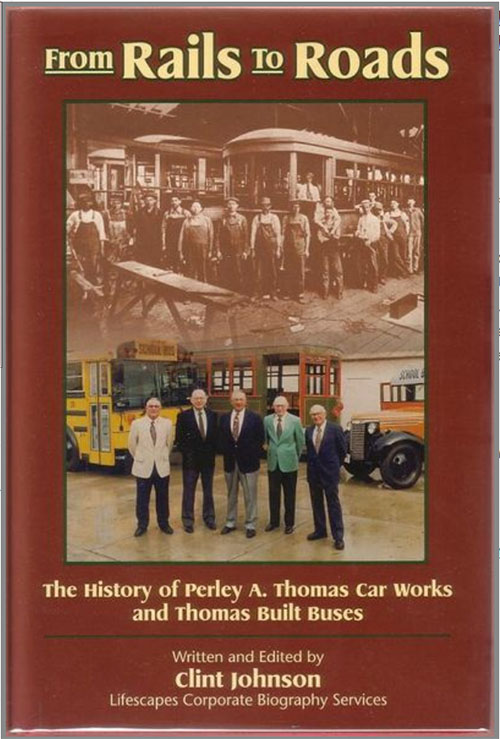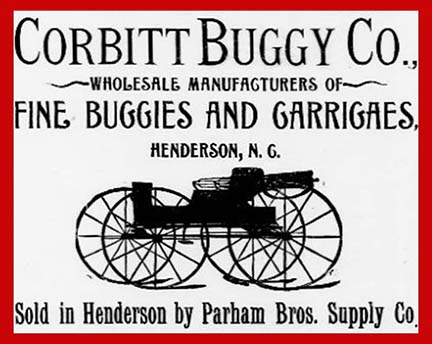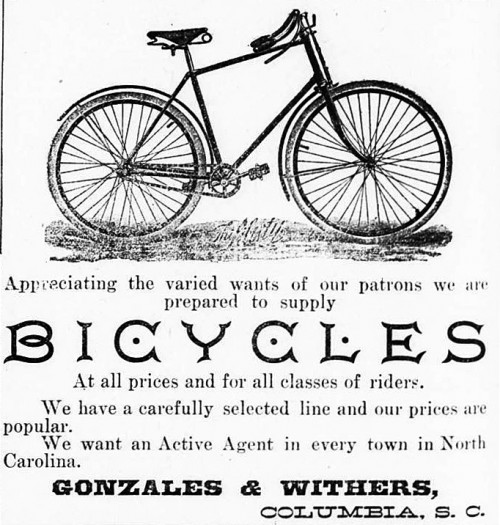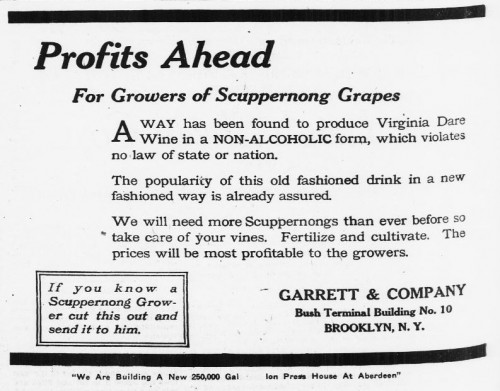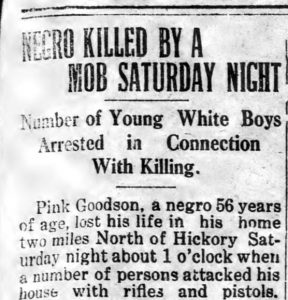
The Hickory Democrat reported that the home of another African American man in the neighborhood had been “shot up in much the same manner some time ago.” The Democrat said that the motive for the killing was not known, unless it was “to frighten the negroes into leaving that section.” The Charlotte Observer also suggested that “the crowd had no intention of killing anybody, but were again expressing their dislike of the negro’s residence there.”
Ten young white boys were quickly arrested for the crime and held without bond in the town jail. The Charlotte Observer reported that “the young men are all sons of good families and there is surprise over the charge lodged against them.”
The killing received attention in newspapers statewide and at least one mention in the national press. In May 1915, the case was listed in the crime section of The Crisis, the publication of the national NAACP. The Crisis reported regularly on lynchings, listing their victims and causes. Their summary of the case was simple, “Pink Goodson, Hickory, N. C., — living in a white neighborhood.”
A few days after the murder, the Charlotte Observer ran a letter from G. M. Garren in Raleigh, who attributed the crime to “the agitation now going on in the State against the privilege that the negro has of purchasing a home and owning land.” Garren goes on to place the blame for the unrest on leaders of the Farmers Union and politicians, arguing that “the laziest way of reaching an office in the South is an agitation of some phase of the race question.” He then predicts that “the perpetrators of this crime will never be punished. The trial will be a farce. No jury can be found who will convict. If the guilty ones are ever brought to trial, they will be turned loose, the heroes of their respective communities.”
On March 20, the same day that Garren’s letter was published and just a week after the murder, the ten young men arrested for the crime were brought to trial. According to the newspaper report, “Before all the witnesses had been examined, Judge Councill arose and asked the court to discharge the boys.” The judge cited insufficient evidence as the explanation for the quick release.
The Hickory Democrat published an editorial on March 25, justifying the handling of the case by local police and courts. Despite reporting in a previous issue that the home of another African American family had been “shot up,” the Democrat insisted that “No evidence has been shown to prove that there was a spirit of ill feeling between the whites and blacks in that neighborhood.” The paper assured its readers that “had the situation been reversed and a white man killed, under the same identical circumstances, we conscientiously believe the progress of justice would have been identical.”
A few weeks after the trial, the Catawba County Commissioners met and agreed to offer a $100 reward for information that would lead to the arrest and conviction of the “parties connected with the murder of Pink Goodson.” Goodson was mentioned only once more in local newspapers, when another home was shot into a few months later. No further progress in the case was reported.



